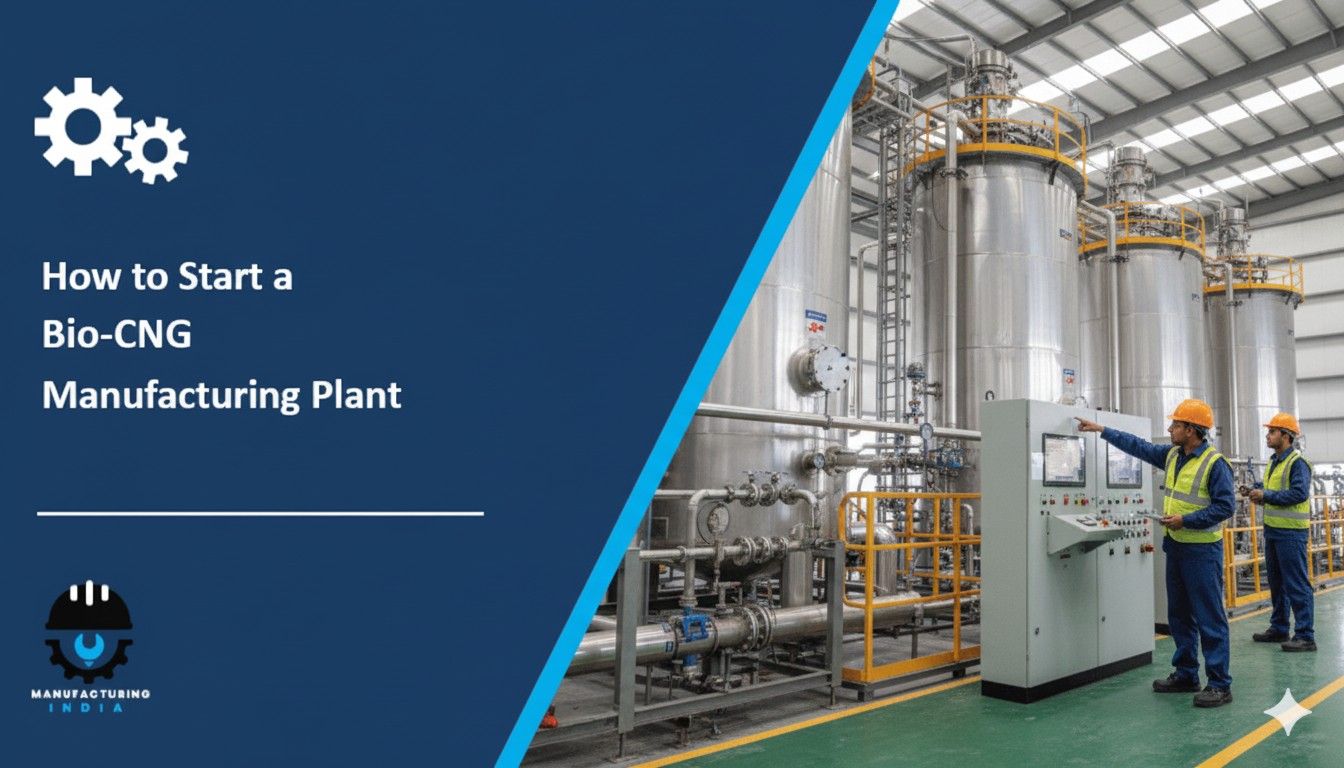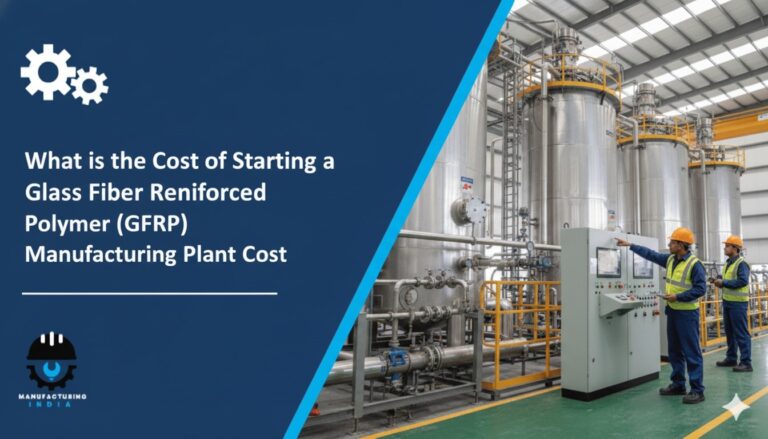
The Bio-CNG (Compressed Natural Gas) manufacturing industry forms the backbone of the global renewable energy and sustainable transportation sector, which serves various segments from vehicle fuel to industrial applications. Therefore, with constant growth in environmental consciousness and clean fuel adoption, establishing a Bio-CNG manufacturing plant presents a promising business opportunity.
The Bio-CNG manufacturing industry is a complex and capital-intensive industry with great potential for new entrants. However, this venture requires careful planning, significant investment, and compliance with environmental and safety regulations. From feedstock sourcing to gas purification standards, every phase of the business is to be conducted with utmost precision. Businesses can streamline this process by leveraging on-demand professional resources, which provide feasibility analysis, cost estimations, and requirements for technical necessities.
Step-by-Step Guide to Setup Bio-CNG Manufacturing Facility
Step 1: Conducting Market Research and Feasibility Study
Analyzing the Market:
- Beyond traditional business segments such as vehicle fuel and industrial applications, enterprises should consider emerging and upcoming trends. For example, demand for decentralized Bio-CNG production from agricultural waste is soaring, and firms have come up with dedicated project models featuring community-based biogas systems and distributed energy networks.
- Another aspect is sustainability, where the demand for carbon-negative fuel production and circular economy models is rising. Several leading energy companies have announced initiatives for transitioning to waste-to-energy systems in production facilities and partnering with certified carbon credit programs.
- Analyze the strategies and advanced technologies offered by significant renewable energy producers in the market. For instance, advanced biogas upgrading systems are designed for maximizing methane purity and CO2 removal efficiency. These use sophisticated membrane separation and pressure swing adsorption to achieve superior performance and gas quality.
- Businesses need to monitor industry shifts, technological advancements, and policy developments constantly to gain a competitive edge. Expert insights can help enterprises stay informed about market trends, competitor strategies, and innovation landscapes. Companies can make data-driven decisions to enhance their market positioning and drive sustainable growth by using tailored research.
- A robust study is essential, and businesses should also consider regional factors. For instance, a plant near dairy farms might focus on cattle dung-based production due to feedstock availability, while an urban plant might cater to municipal solid waste processing and decentralized distribution networks.
- Estimate the capital needed for land acquisition, infrastructure development, biogas generation and purification equipment, compression systems, working capital, and research and development. Recent investments in the renewable natural gas sector highlight the significant financial commitments involved in this industry.
Step 2: Business Plan Development
Include a comprehensive financial model, considering initial investment and operating costs. Address sustainability initiatives, which can attract investors and government support. For instance, leading companies are working towards goals of reducing greenhouse gas emissions through use of organic waste and closed-loop energy systems. Many have targeted achieving net-positive environmental impact as part of their long-term sustainability vision.
- Business Model: Businesses should plan whether to focus on Bio-CNG production for vehicle fueling stations, industrial gas supply, pipeline injection, power generation, carbon credit revenue, or a combination of these approaches and build a business model accordingly.
- Funding Strategy: Outline potential funding sources, including equity investment, bank loans, government subsidies for renewable energy projects, green bonds, or strategic partnerships with waste management companies and energy corporations.
- Production Capacity: Define your target biogas generation volume based on feedstock availability and market demand, considering whether to start with small-scale operations or aim for large-scale centralized production.
- Marketing and Sales Strategy: Develop plans for branding, distribution channels including owned CNG stations, bulk supply contracts to fleet operators, industrial customers, and revenue from carbon credits and renewable identification numbers.
- Risk Assessment: Identify potential risks, such as feedstock supply fluctuations, biogas yield variations, technology reliability issues, regulatory changes in renewable energy policies, or challenges in gas quality consistency, and propose mitigation strategies.
Step 3: Navigating Legal Requirements and Obtaining Necessary Permits
Compliance with legal and regulatory frameworks is essential. Key steps include:
- Business Registration: Register your company in accordance with local laws and renewable energy sector regulations.
- Environmental Clearances: Obtain necessary environmental impact assessment approvals, as Bio-CNG manufacturing involves waste processing and gas production that must meet regulatory requirements for emissions and environmental safety.
- Factory Licenses: Secure licenses required for operating a biogas production and compression facility, including pollution control board approvals and hazardous material handling permits.
- Gas Quality Certifications: Aim for certifications related to compressed natural gas standards, pipeline injection quality specifications, and gas chromatography testing approvals to ensure fuel quality and facilitate market acceptance.
- Safety Certifications: Obtain certifications such as ISO standards for quality and environmental management, petroleum and explosives safety organization approvals, fire safety clearances, and pressure vessel certifications for gas storage systems.
Step 4: Selecting an Optimal Location and Develop Infrastructure
Choosing the right location is critical for operational efficiency. Consider factors such as:
- Proximity to Raw Materials: Access to feedstock sources including agricultural residues, cattle dung from dairies, food processing waste, municipal solid waste, sewage treatment plants, and industrial organic effluents. Proximity to consistent waste generation points reduces transportation costs and ensures steady supply.
- Logistics and Transportation: Ensure good connectivity to target markets, CNG dispensing stations, industrial consumers, and pipeline networks. Access to highways for mobile cascades and proximity to gas pipeline infrastructure is essential for distributing compressed gas.
- Utilities Availability: Reliable access to electricity for compression and plant operations, water for digester operations and cooling systems, adequate drainage facilities, and space for effluent treatment systems.
- Land Size: Adequate space to accommodate current operations including feedstock receiving and preprocessing areas, anaerobic digester tanks, biogas upgrading units, compression and storage systems, laboratory facilities, effluent treatment plants, and future expansions for increased capacity.
Step 5: Procuring Advanced Machinery and Quality Raw Materials
Investing in state-of-the-art machinery ensures efficient production and high-quality output. Essential equipment includes:
- Feedstock Handling Systems: Receiving hoppers and conveyors, shredding and pulping equipment, mixing and homogenization tanks, sterilization systems for certain feedstocks.
- Anaerobic Digestion Infrastructure: Continuous stirred tank reactors or plug flow digesters, temperature control and heating systems, pH monitoring and control equipment, foam control systems, gas collection domes.
- Biogas Upgrading Equipment: Hydrogen sulfide removal systems (biological or chemical scrubbers), moisture removal and dehumidification units, CO2 separation systems using water scrubbing, pressure swing adsorption, membrane separation, or chemical absorption, siloxane removal equipment for certain feedstocks.
- Compression and Storage Systems: Multi-stage natural gas compressors, pressure vessels and cascade storage systems, gas drying and filtration before compression, automated filling systems for cascades or vehicles.
- Quality Control Equipment: Gas chromatography systems for composition analysis, moisture and dew point analyzers, calorific value measurement devices, odorant injection systems for safety.
- Effluent Treatment Systems: Solid-liquid separation equipment, nutrient recovery systems, water treatment for reuse, composting facilities for solid digestate.
- Safety and Monitoring Equipment: Gas leak detection systems, pressure and temperature monitoring throughout the plant, emergency shutdown systems, fire suppression equipment, SCADA systems for plant automation.
Raw Material Requirements:
Source consistent and quality feedstock from reliable suppliers, including cattle dung from dairy farms, crop residues and agricultural waste, food processing waste from industries, municipal organic waste through collection agreements, industrial effluents with high organic content, and appropriate inoculum cultures for efficient digestion.
Step 6: Building a Skilled Workforce
Recruiting and training skilled personnel is vital. Key roles include:
- Chemical and process engineers for overseeing biogas production processes, optimizing digester performance, upgrading system efficiency, and maintaining equipment reliability.
- Quality control specialists to ensure gas meets CNG standards and fuel quality specifications through regular testing and monitoring.
- R&D team for optimizing feedstock mix, improving gas yield, developing efficient purification methods, and troubleshooting operational challenges.
- Operations managers and technicians for daily plant operations, feedstock management, digester monitoring, compression operations, and preventive maintenance.
- Environmental and safety officers to ensure adherence to environmental regulations, safety protocols, and certification requirements.
- Sales and business development professionals to drive customer acquisition, fleet operator partnerships, industrial supply contracts, and carbon credit monetization.
Companies with strong reputations in the renewable energy industry have established comprehensive training programs to develop skilled workers in biogas technology, contributing to their reputation for operational excellence and safety.
Step 7: Implementing the Production Process
The Bio-CNG manufacturing process involves multiple stages, which include:
- Feedstock Reception and Preparation: Receiving and weighing incoming feedstock materials, initial quality inspection for contamination and composition, shredding or pulping to optimal particle size, mixing different feedstocks for balanced C:N ratio, and dilution or thickening to appropriate total solids content.
- Anaerobic Digestion: Feeding prepared slurry into digester at controlled rate, maintaining optimal temperature in mesophilic or thermophilic range, continuous or batch digestion process depending on system design, biogas collection from digester headspace, monitoring pH, temperature, volatile fatty acids, and gas production rate.
- Biogas Upgrading and Purification: Hydrogen sulfide removal through biological or chemical scrubbing to prevent corrosion and odor, moisture removal to dew point specifications, carbon dioxide separation to increase methane content to pipeline or vehicle fuel standards, removal of other impurities including siloxanes, ammonia, and particulates, achieving methane purity typically above specified percentage.
- Gas Compression and Storage: Compressing purified biomethane to high pressure for CNG applications, multi-stage compression with intercooling, filling cascade storage systems or mother-daughter configurations, final filtration and drying if needed, quality verification before storage or dispensing.
- Quality Assurance Testing: Continuous gas composition monitoring using online analyzers, periodic laboratory testing for detailed gas quality parameters, calorific value measurement, moisture and hydrocarbon dew point verification, ensuring compliance with national CNG standards, documentation and certification for each batch or production period.
- Distribution and Sales: Dispensing directly to vehicles at on-site or linked CNG stations, filling mobile cascades for transportation to remote fueling stations, pipeline injection for grid distribution where infrastructure exists, supply to industrial customers through bulk storage systems, or sale of carbon credits and renewable identification numbers.
- By-product Management: Solid-liquid separation of digestate, liquid fraction processing for irrigation water or nutrient concentrate, solid digestate composting or direct land application as organic fertilizer, quality testing of organic fertilizer products, packaging and distribution to agricultural customers.
Step 8: Establishing Marketing and Distribution Channels
A robust marketing and distribution strategy is essential for establishing a strong presence in the market. Consider the following approaches:
- Retail CNG Stations: Establish company-owned CNG dispensing stations at strategic locations, partner with existing petroleum retailers to add Bio-CNG pumps, create franchisee networks for wider reach, and ensure competitive pricing with attractive loyalty programs.
- Fleet Partnerships: Form long-term supply agreements with public transport operators, contract with logistics and delivery companies converting to CNG, partner with taxi and ride-sharing fleets, and supply to government vehicle fleets with renewable fuel mandates.
- Industrial Customers: Supply Bio-CNG to industries using natural gas for heating or processing, provide gas to captive power plants seeking renewable alternatives, partner with ceramic, glass, and textile industries, and offer competitive pricing through take-or-pay contracts.
- Pipeline Injection: Negotiate gas sale agreements with natural gas distribution companies, ensure gas quality meets pipeline specifications, leverage renewable natural gas premiums and incentives, and establish metering and custody transfer systems.
- Carbon Credit Monetization: Register projects under carbon credit mechanisms, document emission reductions through third-party verification, sell carbon credits in voluntary or compliance markets, and leverage renewable identification numbers where applicable.
- Export and Interstate Supply: Study regulatory framework for inter-state Bio-CNG trade, explore opportunities in regions with high CNG demand, establish logistics for cascade transportation, and comply with fuel quality standards across jurisdictions.
Step 9: Ensuring Compliance with Safety and Environmental Standards
Bio-CNG manufacturing involves strict safety protocols for handling flammable gas and environmental considerations for waste processing, making regulatory compliance crucial. Key measures include:
- Worker Safety: Implement strict safety protocols for working in confined spaces like digesters, provide personal protective equipment including gas detectors, breathing apparatus, and protective clothing, train employees on fire safety, gas leak response, and emergency procedures, and conduct regular safety drills and audits.
- Gas Handling and Storage: Establish proper protocols for handling compressed natural gas, implement automated leak detection systems throughout the plant, maintain proper ventilation in enclosed areas, design gas storage systems with adequate safety margins and pressure relief devices, and ensure regular inspection and testing of pressure vessels.
- Process Safety Management: Conduct hazard and operability studies, implement process safety management systems, maintain safety instrumented systems with appropriate safety integrity levels, establish emergency response plans with local fire departments, and ensure proper lightning protection and electrical grounding.
- Waste and Effluent Management: Treat liquid effluent to meet discharge standards or reuse specifications, manage solid digestate through composting or controlled land application, implement odor control measures to minimize nuisance to surrounding areas, and ensure proper disposal of spent chemicals and filters.
- Emissions Monitoring: Install continuous emission monitoring systems where required, control fugitive methane emissions through leak detection and repair programs, implement gas flaring systems for emergency venting, and maintain records demonstrating environmental compliance.
- Environmental Impact Mitigation: Develop buffer zones around the facility, implement noise control measures for compressors and equipment, manage storm water runoff to prevent contamination, and adopt energy-efficient operations to minimize carbon footprint of the facility itself.
Governments and regulatory bodies worldwide are increasingly enforcing stringent safety and environmental regulations for biogas and Bio-CNG facilities. Leading renewable energy companies have pledged comprehensive safety cultures and environmental stewardship through adoption of international best practices.
Step 10: Planning for Future Expansion and Innovation
Once the Bio-CNG plant is fully operational, focus on scaling up production and expanding market reach. Key strategies include:
- Increasing Production Capacity: Expand facilities by adding digester capacity, upgrade to higher-efficiency upgrading technologies, establish satellite collection centers for feedstock aggregation, or develop additional plants in different regions to access diverse feedstock sources and markets.
- Technology Upgrades: Invest in advanced biogas upgrading technologies for higher efficiency, implement automated monitoring and control systems, adopt membrane or cryogenic upgrading for better methane recovery, or integrate power generation for combined heat and power applications.
- Feedstock Diversification: Expand to process diverse organic waste streams, develop specialized systems for high-strength industrial effluents, process municipal solid waste through integrated facilities, or utilize sewage sludge from wastewater treatment plants.
- Value Addition: Produce liquefied Bio-CNG for long-distance transportation, generate renewable electricity through biogas engines or fuel cells, extract and sell high-value CO2 for industrial applications, or develop premium organic fertilizers from digestate.
- Vertical Integration: Consider backward integration through establishing feedstock aggregation networks or waste collection systems, forward integration by operating CNG retail stations or fleet services, or develop in-house engineering and construction capabilities for replication.
- Strategic Partnerships: Collaborate with automotive manufacturers promoting CNG vehicles, partner with waste management companies for assured feedstock supply, form joint ventures with gas distribution companies for pipeline access, work with agricultural cooperatives for rural biogas programs, or engage with carbon credit aggregators and traders.



